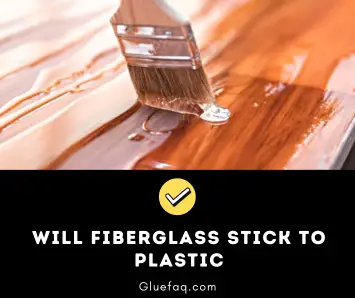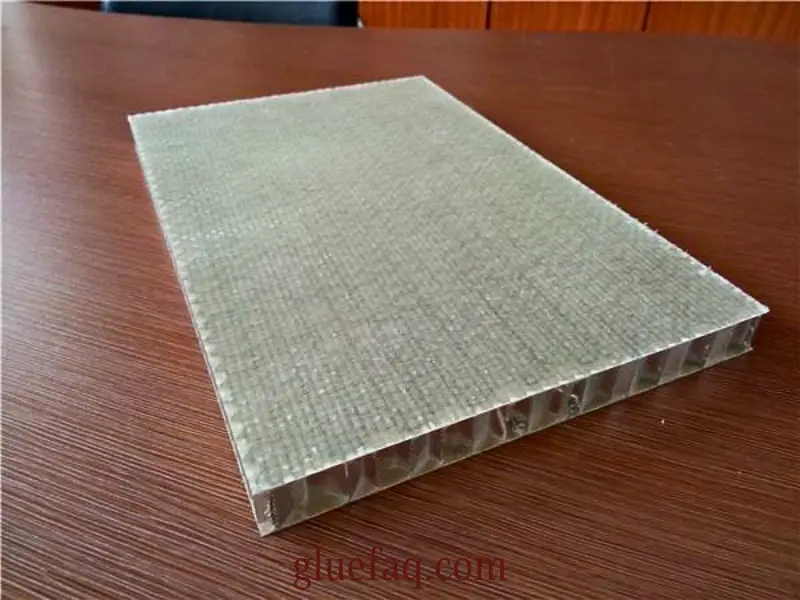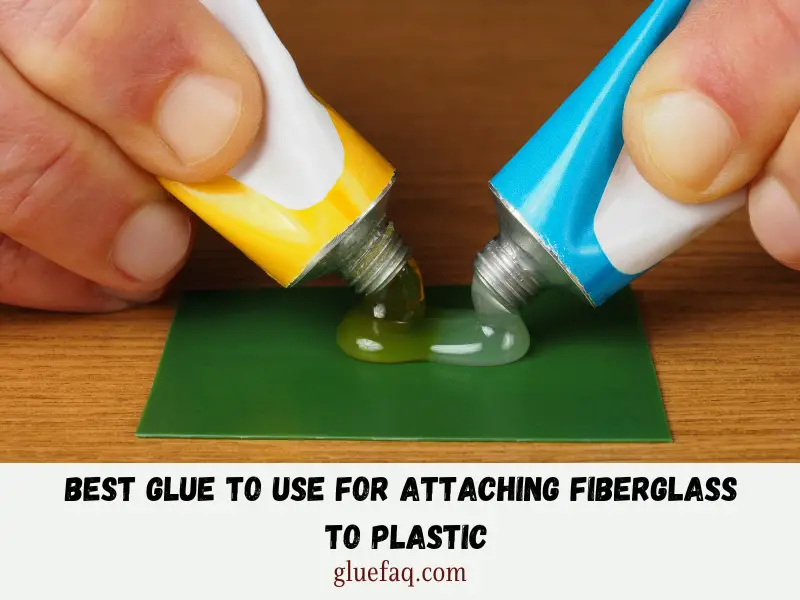Will Fiberglass Stick To Plastic: Fiberglass and plastic are widely used in commercial and industrial sectors for construction purposes?
These materials can be easily shaped and customized to fit various needs, making them suitable for automobile manufacturing, building infrastructure, and plumbing systems.

In addition, artists who work with different materials may choose to incorporate fiberglass and plastics in their permanent sculptures.
To combine these materials effectively, a strong plastic epoxy is needed, and it can be easily obtained from any hardware store.
Fiberglass-Plastic Connection
As we embark on our quest to discover whether fiberglass will stick to plastic, let’s first grasp the fundamentals of this intriguing relationship. Fiberglass, a reinforced composite material, possesses remarkable strength and versatility.

Plastic, on the other hand, offers a wide array of materials, each with its unique properties. The synergy between these two holds immense potential for various applications.
An Overview of Fiberglass and Plastic
Fiberglass and plastic are versatile materials commonly used in various industries. Fiberglass is a lightweight and durable material made of fine glass fibers embedded in a resin matrix, while plastic is a synthetic polymer that can be molded into different shapes and sizes.
Characteristics and Properties of Fiberglass
Fiberglass is a composite material comprised of fine glass fibers embedded in a resin matrix. Its lightweight nature, exceptional tensile strength, and resistance to corrosion make it an attractive choice across industries. Embracing fiberglass opens doors to endless possibilities.
Types and Varieties of Plastic Materials
Plastic, an integral part of our modern lives, encompasses a vast range of materials. From the flexible and ubiquitous polyethylene to the rigid and durable polycarbonate, plastics come in diverse forms, each offering distinct benefits. Understanding these varieties aids us in choosing the right combination with fiberglass.
Mechanical Interlocking and Surface Roughness
Enhancing the bond through mechanical interlocking and surface roughness is a game-changer. Creating a roughened surface or utilizing interlocking features maximizes the bond strength, guaranteeing a robust connection.
What’s the best glue to use for attaching fiberglass to plastic?
When it comes to bonding fiberglass to plastic, various adhesive methods prove effective. Let’s explore some tried-and-true techniques for achieving a successful union.

Epoxy Resins
Epoxy resins, renowned for their exceptional bonding properties, provide a reliable and strong connection between fiberglass and plastic. Their versatility and ability to withstand harsh conditions make them a popular choice across industries.
Polyurethane Adhesives
Polyurethane adhesives offer a flexible yet durable bond. Their ability to withstand impact and resist moisture makes them ideal for certain applications.
However, it’s essential to consider their longer curing times and potential for joint expansion.
Acrylic Adhesives
Acrylic adhesives excel in joining dissimilar materials like fiberglass and plastic. Their fast curing time and excellent resistance to environmental factors make them suitable for specific bonding needs.
Structural Adhesive Tapes
Structural adhesive tapes present a convenient alternative for bonding fiberglass and plastic. Their ease of use, quick application, and reliable strength make them an attractive option, particularly in certain industries.
Preparing the Surface for Fiberglass-Plastic Bonding
Surface Cleaning and Degreasing Techniques
Before embarking on the bonding process, meticulous surface cleaning and degreasing are paramount. Utilizing appropriate cleaning techniques and solvents ensures a pristine surface, enhancing the chances of a successful bond.
Mechanical Abrasion and Sanding Methods
Creating a roughened surface profile through mechanical abrasion and sanding promotes better adhesion. These techniques enhance the bonding area and allow the adhesive to penetrate more effectively, resulting in a stronger connection.
Chemical Treatments and Primers
Chemical treatments and primers can optimize the adhesion process by promoting surface activation and providing an additional layer of compatibility. These preparatory steps significantly contribute to the overall success of the bond.
Step-by-Step Guide for Fiberglass-Plastic Bonding
Are you ready to embark on a bonding adventure? Let’s walk through a step-by-step guide to ensure a seamless and successful union between fiberglass and plastic.
Step# 1
To prepare the fiberglass and plastic surfaces, gently wipe them with a soft cloth soaked in a solvent like isopropyl alcohol, acetone, or lighter fluid.
Step# 2
Lightly sand both surfaces using fine sandpaper to create a slightly rough texture. This helps the epoxy stick to the materials effectively, ensuring a strong and long-lasting bond.
Step# 3
To use epoxy, open the container and follow the instructions printed on it. While some epoxies are ready to use, most manufacturers require you to mix the resin and hardener together before applying it.
Step# 4
To ensure a strong bond, gently spread a thin layer of epoxy on both surfaces. Be cautious not to apply excessive epoxy, as it may weaken the bond.
Step# 5
Simply press the fiberglass and plastic together firmly and keep them held together for about two to three minutes. Afterward, use a wet cloth to wipe off any extra epoxy.
Step# 6
Secure the joined parts using a vice clamp. Rotate the vice’s arm in a clockwise direction to tighten the clamps around the pieces. Be careful not to exert excessive force on the parts, as it might lead to cracking.
Step# 7
Let the pieces remain undisturbed in the clamp until the epoxy is fully cured. For optimal outcomes, check the suggested drying time on the epoxy container.
Factors Affecting Adhesion between Fiberglass and Plastic
To ensure a successful bond between fiberglass and plastic, several critical factors come into play. Let’s explore the key influencers that determine the strength and durability of the connection.
Surface Preparation and Cleanliness
Achieving a clean and well-prepared surface is paramount. Thoroughly removing dirt, grease, and contaminants ensures maximum adhesion and avoids potential failures. A clean slate sets the stage for a strong bond.
Temperature and Environmental Conditions
Temperature and environmental factors significantly impact the adhesive process. Proper temperature control and ensuring ideal conditions during bonding play a vital role in the success of fiberglass-plastic adhesion.
Type of Plastic and Fiberglass Resin
The choice of plastic and fiberglass resin greatly influences their compatibility. Not all combinations yield optimal results. Understanding the characteristics of each material helps us make informed decisions for a strong and lasting bond.
Testing and Assessing the Bond Strength
Curiosity piqued? Let’s explore some testing methods to evaluate the strength of your fiberglass-plastic bond without breaking a sweat.
Non-Destructive Testing Methods: Non-destructive testing techniques allow us to assess the bond’s integrity without damaging the materials.
From ultrasonic testing to visual inspection, these methods provide valuable insights into the strength and quality of the connection.
Destructive Testing Techniques: For a more comprehensive analysis, destructive testing techniques come into play.
By subjecting the bonded fiberglass-plastic samples to controlled stress and evaluating the results, we gain a deeper understanding of the bond’s capabilities.
Advantages and Limitations of Fiberglass-Plastic Bonding
Before we conclude our enlightening journey, let’s examine the advantages and limitations of bonding fiberglass to plastic.
Enhanced Strength and Durability
Fiberglass-plastic bonding unlocks a world of increased strength and durability. Components boast enhanced load-bearing capabilities, improved impact resistance, and long-lasting performance.
Weight Reduction and Design Flexibility
Embracing fiberglass-plastic bonding paves the way for lightweight designs. Reduced weight translates to improved fuel efficiency, increased payload capacity, and endless design possibilities.
Challenges and Considerations
While the benefits are substantial, it’s essential to acknowledge the challenges and considerations. Factors such as surface preparation, material compatibility, and temperature control require careful attention to ensure a successful bond.
Comparing Fiberglass-Plastic Bonding with Other Joining Methods
Adhesive Bonding vs. Mechanical Fasteners
Discover why adhesive bonding triumphs over traditional mechanical fasteners. Seamless aesthetics, improved structural integrity, and enhanced performance make adhesive bonding the go-to choice.
Fiberglass-Plastic Bonding vs. Welding Techniques
Uncover the advantages of fiberglass-plastic bonding over traditional welding techniques. Reduced heat-affected zones, improved design flexibility, and simplified assembly processes make this bonding method the frontrunner.
Cost Analysis and Considerations
While performance and strength are paramount, cost considerations play a significant role in decision-making. Let’s explore the economic aspects and advantages of fiberglass-plastic bonding.
Related:
FAQs About Fiberglass Stick To Plastic
Curiosity sparks questions. Here are answers to some commonly asked queries that might have arisen during our journey:
Fiberglass can be bonded to many types of plastics, but the success of the bond depends on the specific types of materials involved and the adhesive used. It’s recommended to consult adhesive manufacturers or experts for compatibility information.
Bonding fiberglass to plastic can present challenges such as differences in thermal expansion rates, surface compatibility, and adhesion strength. Proper surface preparation, material selection, and adhesive application techniques are crucial for achieving a strong and durable bond.
Yes, surface preparation is essential for a successful bond between fiberglass and plastic. It typically involves cleaning the surfaces thoroughly, removing contaminants, and roughening the surface to enhance adhesion. Following the manufacturer’s guidelines for surface preparation is important.
Yes, fiberglass-embedded plastic can often be repaired. The specific repair method depends on the extent and type of damage. It may involve patching with additional fiberglass, using epoxy or specialized plastic repair kits, and proper surface finishing techniques. Consulting a professional or following manufacturer guidelines is recommended for the best results.
Conclusion
Our quest to uncover the compatibility between fiberglass and plastic draws to a close, leaving us inspired and enlightened.
Key takeaways include the immense potential of this bonding technique, the importance of surface preparation, and the numerous industries benefiting from this remarkable union.
Embark on your own bonding adventures, and unlock the power of fiberglass-plastic cohesion.
Let innovation guide you as you create stronger, lighter, and more resilient structures and components. The world of fiberglass-plastic bonding awaits your creative touch.
